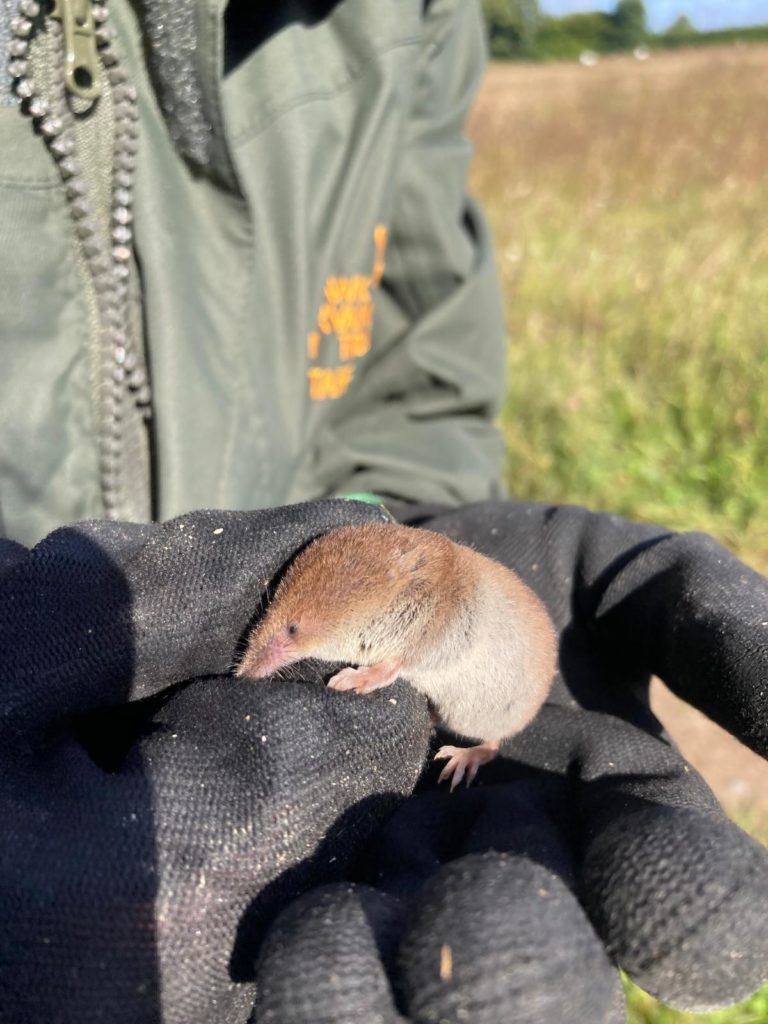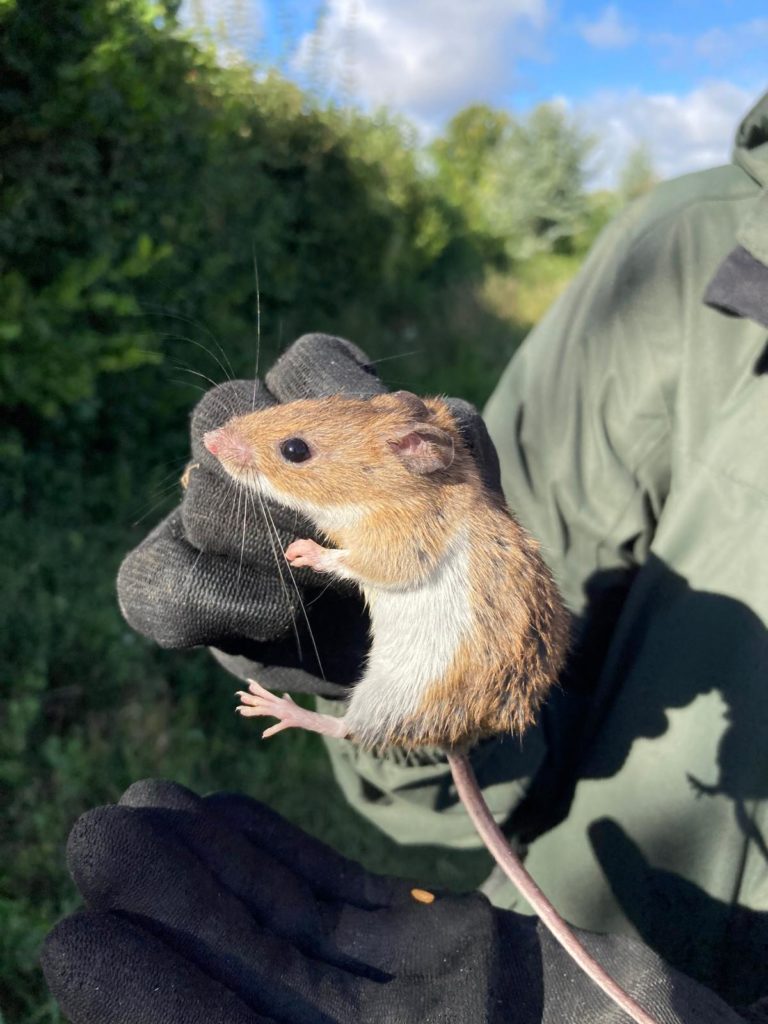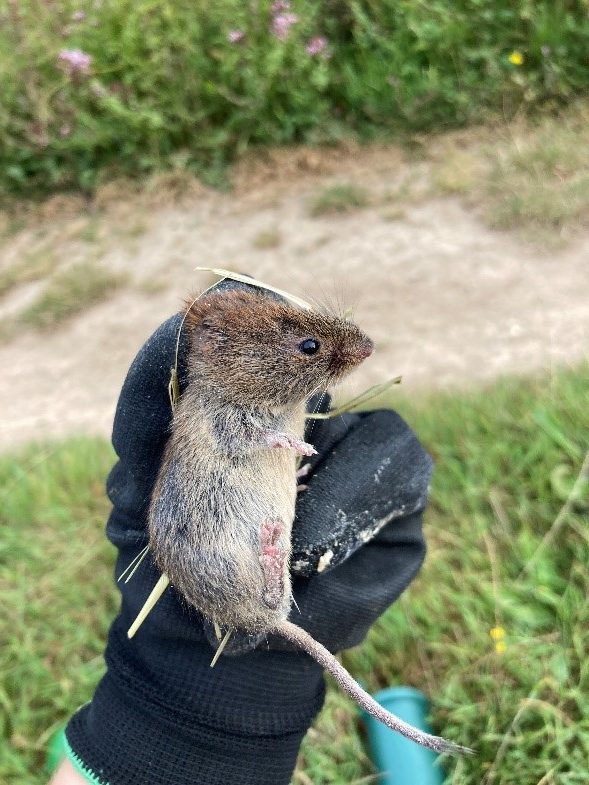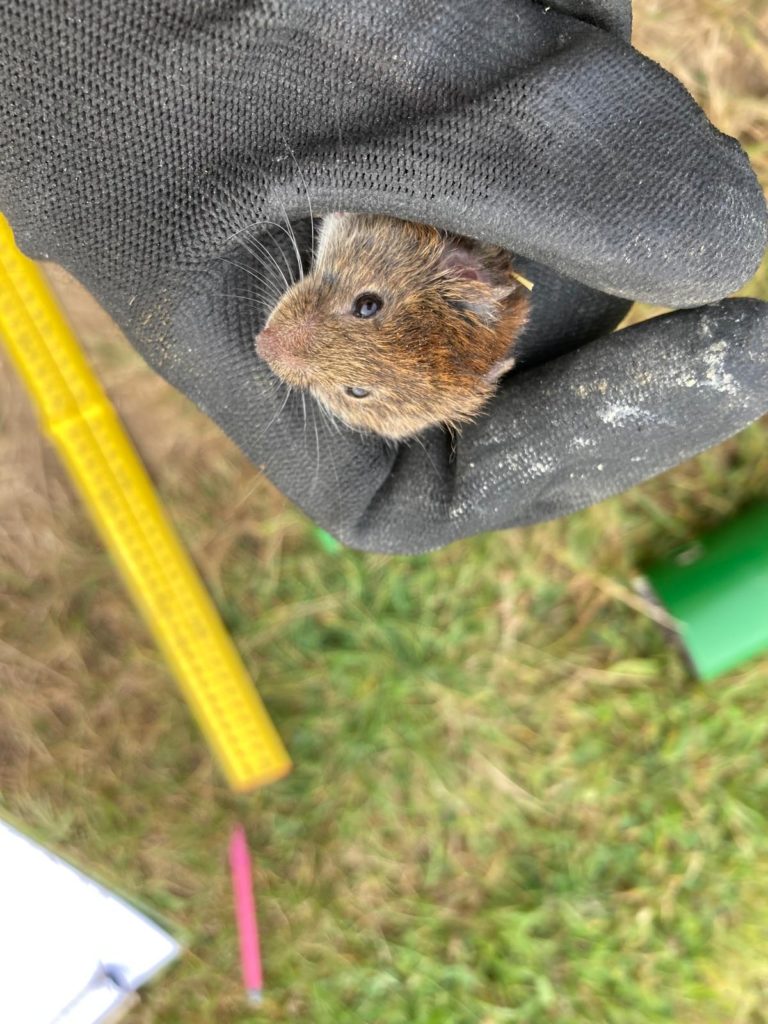
Small mammals (for example rodents) make up a high proportion of the diet of UK birds of prey. For the last few years, the Conservation and Research team at the Hawk Conservancy Trust have carried out small mammal surveys at both on-site and at two local external sites in Hampshire to estimate prey availability and abundance, which are key for a successful breeding season. These sites are chosen based on locations of regularly used nest boxes that are monitored as part of our Raptor Nest Box Project. With Kestrel numbers declining across the country, we are particularly interested in their main prey species, the Field Vole. Nevertheless, we record all mice, voles and shrews we catch and release throughout a season.
In this study, we set traps overnight which have lots of cosy bedding and plenty of food in them to ensure they are safe, warm and well fed! We then return first thing the following morning to check whether there are any visitors. If we are lucky, we gently handle them to take a few body measurements, helping to identify which species they are. After a few minutes, we release them safe and sound right back to where they were found.


This year, after a late start in mid-July, we had hoped to fit in two rounds of surveying at all three of our sites (one round takes a week). Sadly, due to large amounts of rain, the season had to be shortened. When it rains, the bedding can become wet and cold turning the experience into a slightly less comfortable stay for any small mammals using the traps. This meant we only managed to survey at our external sites once, but managed to do two rounds here at the Trust, which had surprisingly high numbers this year!
In total, we caught 62 small mammals over four rounds of trapping; 50 were caught here at the Trust, but we had two sessions here compared to just the one at each of the other sites. It was interesting to note a difference between the two weeks at the Trust, catching 14 small mammals the first round and 36 in the next round. Interestingly, across all three sites, we caught relatively even numbers of shrews, voles and mice species across the survey period, but the winner for the highest numbers was the Common Shrew (18) closely followed by the Field Vole (13)!
We also encountered six false triggers, where the trap door was closed but nothing was inside, which were either due to traps malfunctioning, or rather tactful small mammals evading the trigger panel! As a result, we made sure to look for signs of small mammal visitation; signs of nibbling on the food, faeces and burrowing in bedding, which can also be useful to know that something had visited regardless.
We spoke to our Conservation and Research Intern Mathilde Ducroz, and new Research Assistant Tanith Jones, for their thoughts on their first real experience working on small mammal research:
Mathilde:
Having worked with wild birds previously, I expected the small mammals to be easier to work with. I was very wrong! Despite them not being able to fly away, their speed, jumping and impressive contortion skills (voles, mice and shrews have loose skin that enables them to twist around) make them the expert escape artists and incredibly hard to handle. A rodent or shrew will take any exit it can see, including running up your colleague’s sleeve and back, which made for a memorable situation!
Small mammals are an essential part of ecosystems and are the source of food of many mammals and birds but, apart from the occasional house mouse or rat, are seldom seen by many people. It felt very special to have such a close up encounter of these little creatures. Differentiating between the species proved quite the challenge at the start, especially between Bank and Field Vole. After spotting a few of them, the distinction became more obvious, with tail length a good indicator: approximately one third of body length for Field Voles against half of the body length for Bank Voles.


Tanith:
I have never worked directly with small mammals in the past and my only experience of monitoring them has been using indirect techniques, such as processing owl pellets. Learning how to hold them, how the traps work, set-up and maintenance as well as building upon identification skills, meant no two days were the same over the summer. I came to learn how nimble and agile these small mammals can be, and I have a newfound respect for how our birds of prey are able to hunt them with so much grace and precision!
With many high points as well as some challenges across this survey period, I am looking forward to approaching the next season with what I have learnt. Small mammal surveying is a great way to see what prey species are in the area and how this could potentially impact the breeding season of birds of prey across our countryside.